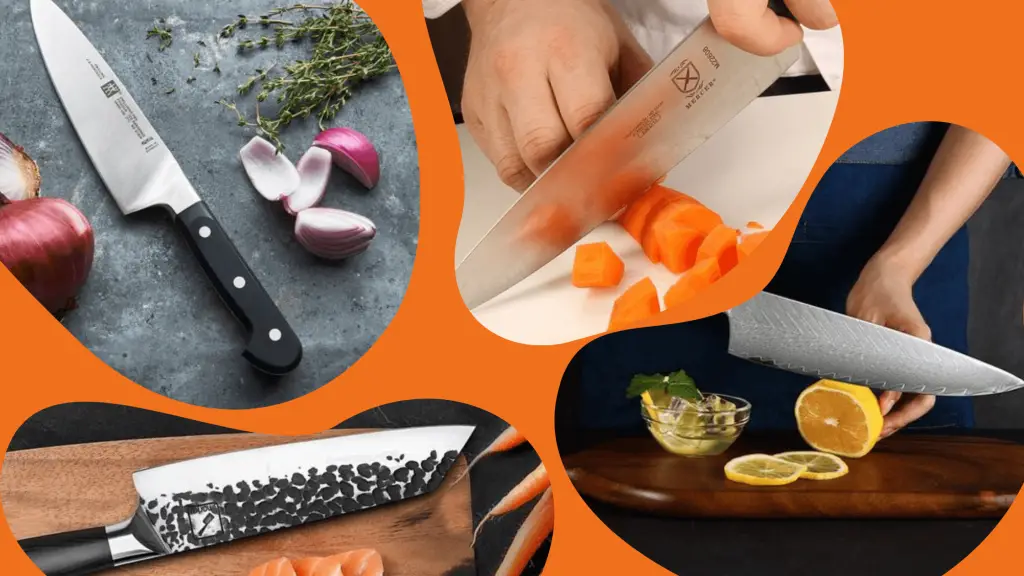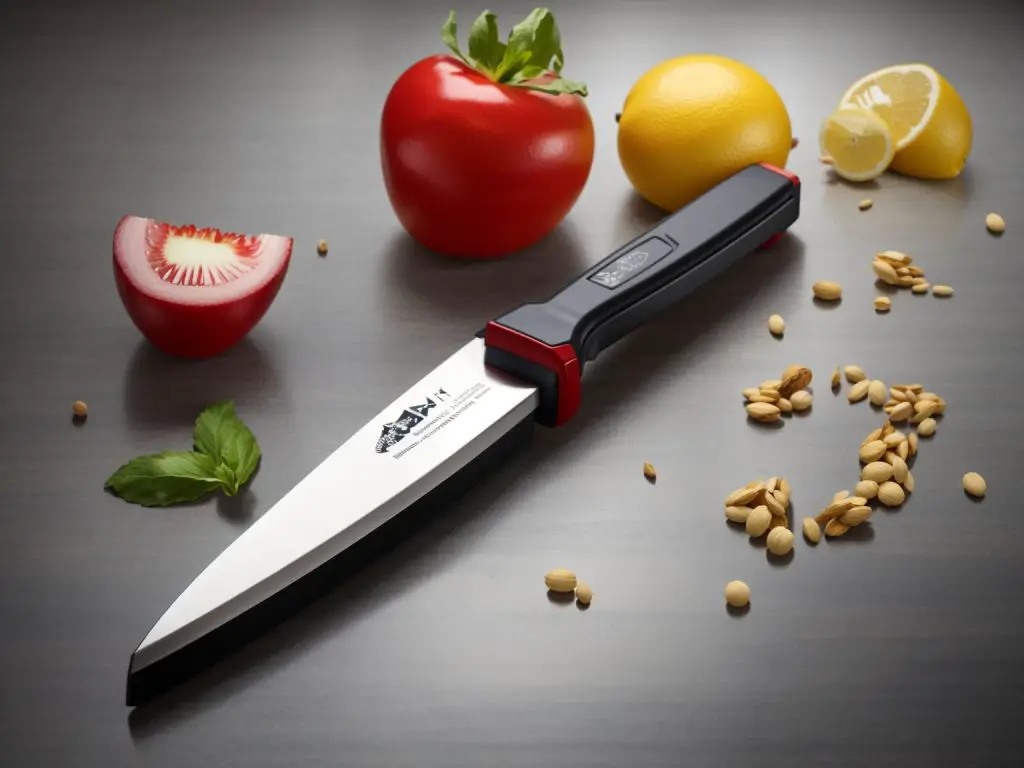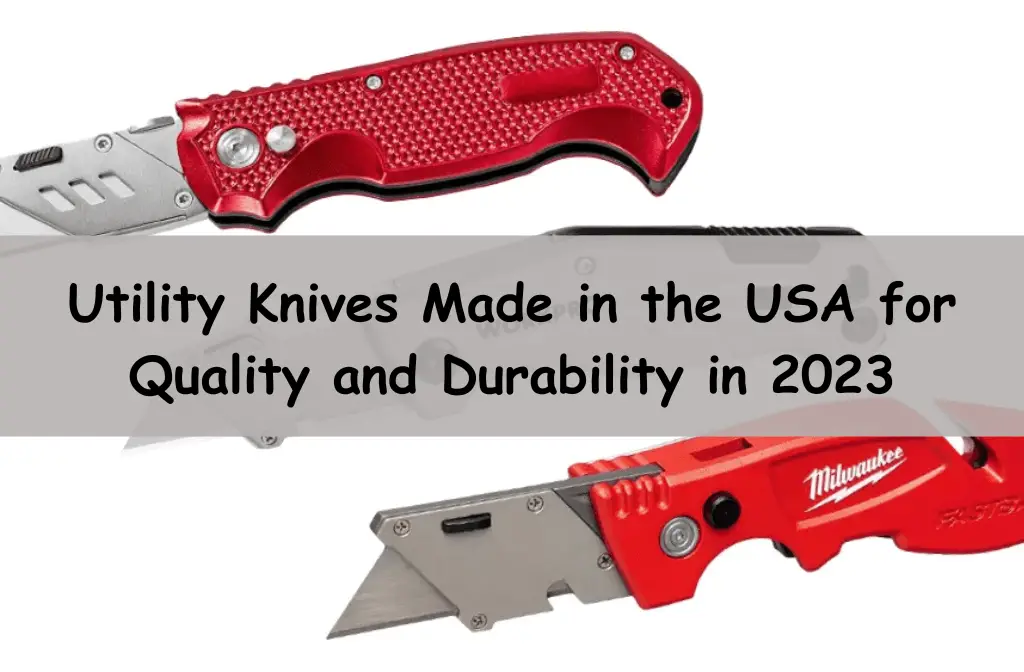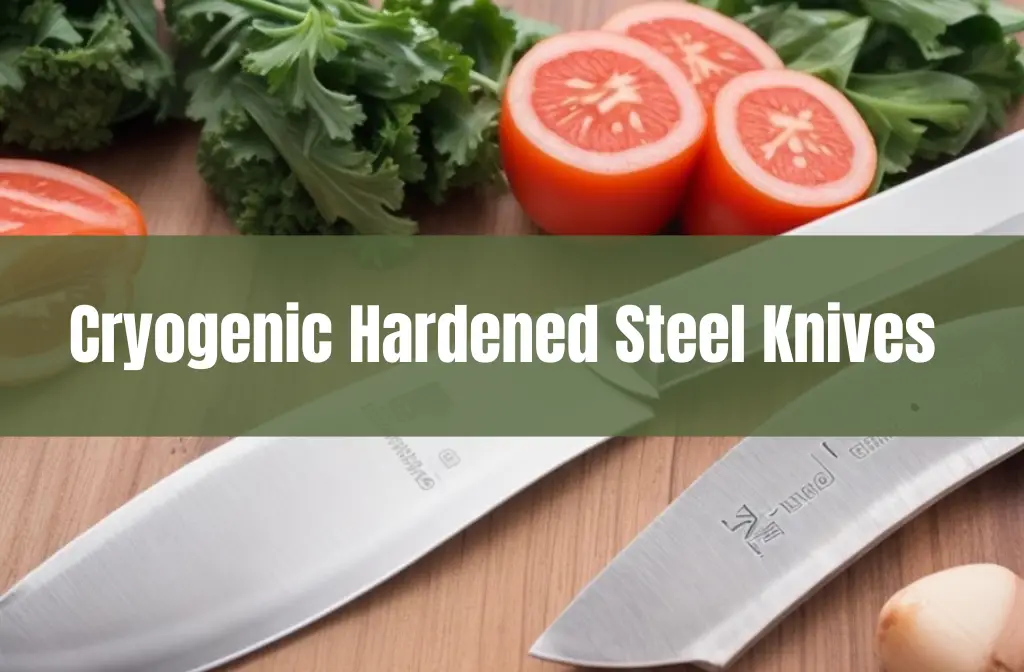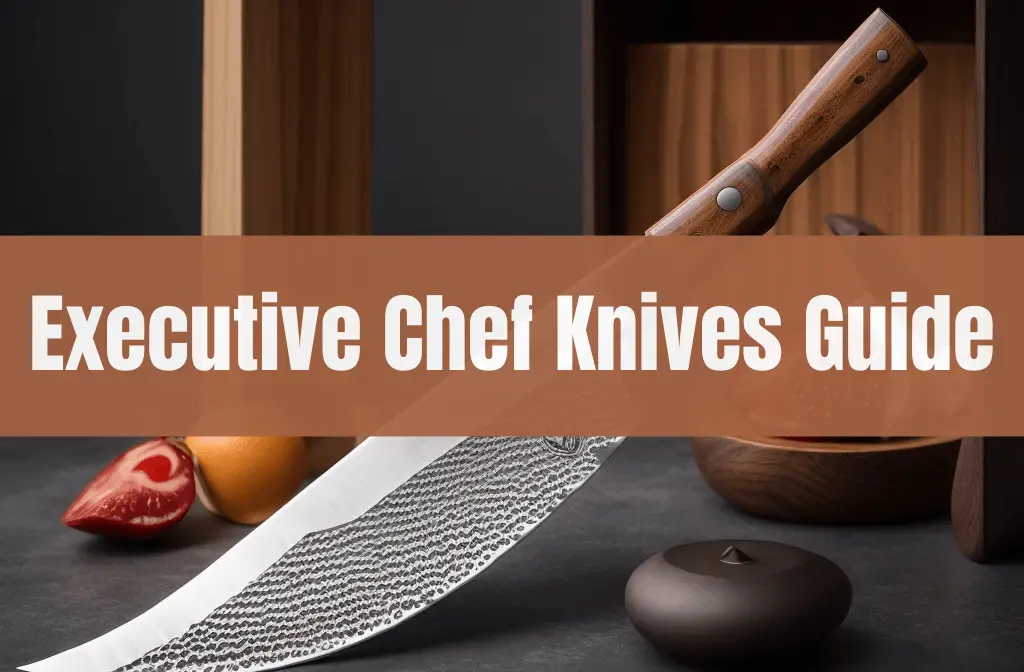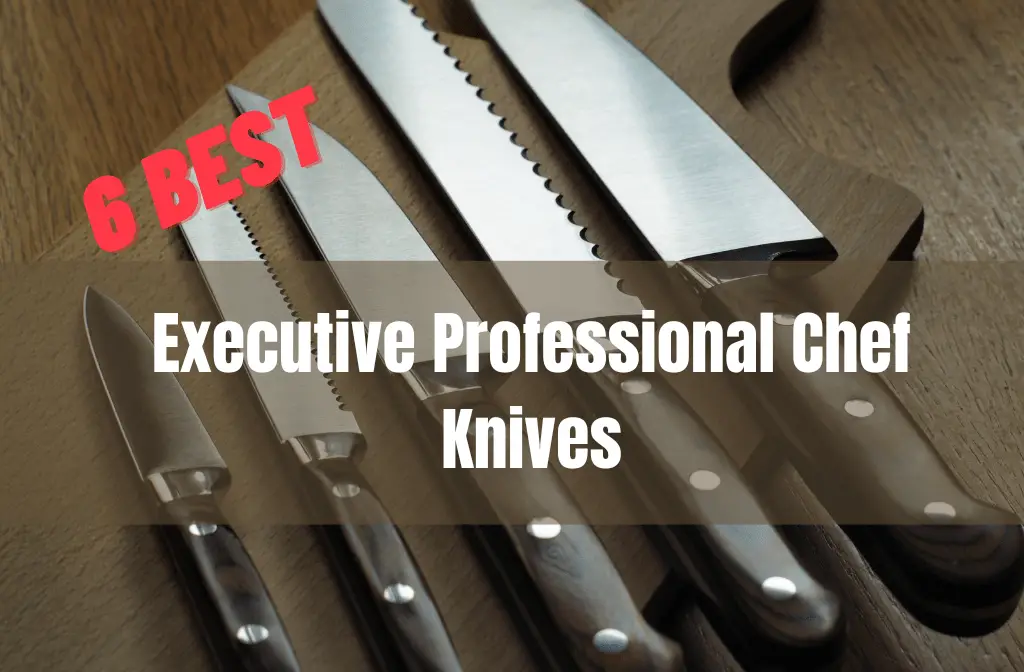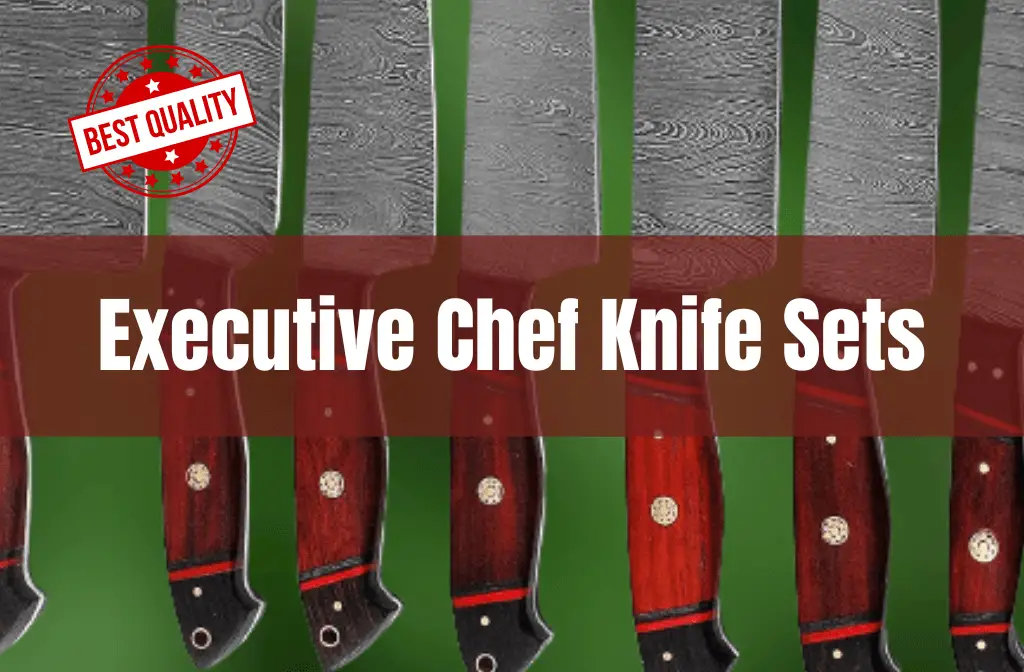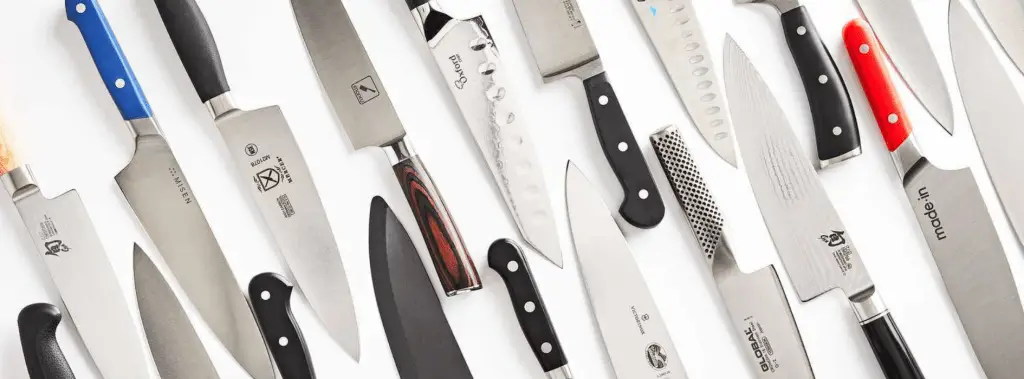
If you’re a passionate cook or even just an occasional home chef, you know that having the right tools can make all the difference in the kitchen. And when it comes to kitchen tools, few are as important as a good chef’s knife. A well-made chef’s knife can transform the way you cook, allowing you to chop, slice, and dice with ease. But with so many options available, it can be difficult to know where to start. That’s why we’ve put together this comprehensive guide to help you choose the perfect chef’s knife for your needs. Whether you’re a beginner or a seasoned pro, you’ll find everything you need to know right here. So, let’s dive in and find your perfect kitchen companion!
Table of Contents
What Makes a Good Chef’s Knife?
Before we dive into the types of chef’s knives available, it’s important to understand what makes a good chef’s knife.
A good chef’s knife should have a durable and rust-resistant blade material, such as stainless steel or high-carbon steel. The shape and size of the blade can greatly affect its performance and versatility, with the most common shapes being French or Western-style and Japanese or Eastern-style. The handle material and design are also important, with common materials including wood, plastic, and composite materials.
Blade Material
The most common blade materials for chef's knives are stainless steel and high-carbon steel. Stainless steel is resistant to rust and stains and requires less maintenance, but it may not hold a sharp edge as long as high-carbon steel. High-carbon steel, on the other hand, is more durable and holds a sharp edge longer, but it requires more maintenance to prevent rust and stains.

Blade Shape and Size
The shape and size of the blade can also affect the knife's performance. A longer blade can be useful for chopping and slicing larger ingredients, while a shorter blade may be easier to handle for smaller tasks. The blade shape can also vary, with some knives featuring a curved blade for rocking back and forth while chopping and others featuring a straighter blade for more precise cuts.

Handle Material and Design
The handle of a chef's knife should be comfortable and easy to grip. Common handle materials include wood, plastic, and metal. It’s important to choose a handle material that feels comfortable in your hand and provides a good grip. The handle design can also affect the balance of the knife, with some knives featuring a full tang design where the blade extends into the handle, providing better balance and control.
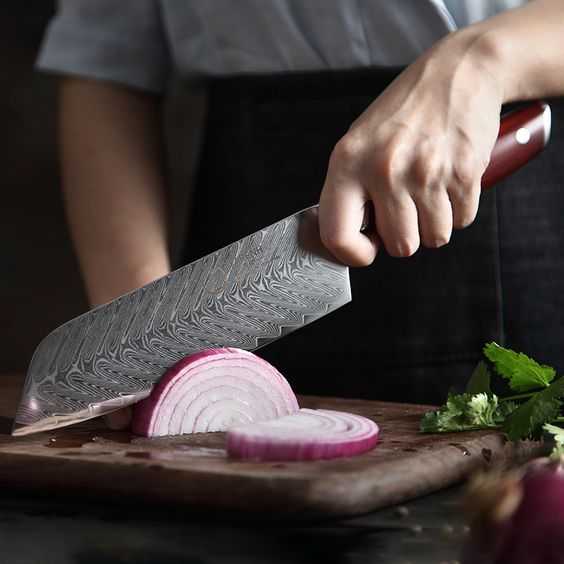
Types of Chef’s Knives: Choosing the Right Blade for Your Needs
Now that we've covered what makes a good chef's knife, let's take a look at the different types of chef's knives available.
French or Western-style Chef’s Knife
The French or Western-style chef’s knife is an incredibly versatile tool for any kitchen. Its curved blade is perfect for chopping, slicing, and mincing a wide variety of ingredients with ease. These knives typically feature a blade that is between 8 and 10 inches long, made of either high-carbon or stainless steel, which ensures its durability and long-lasting sharpness.
The handle is usually made of materials such as wood, plastic, or metal, providing a comfortable grip and balance while in use. Some chef’s knives may even have a full tang design, providing an added level of stability and control for precision cuts. With its high-quality materials and versatile design, the French or Western-style chef’s knife is an essential tool for any chef or home cook.
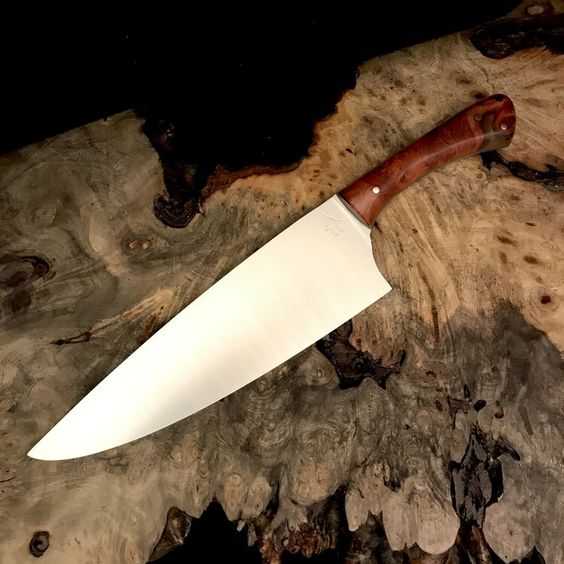
Japanese or Eastern-style Chef’s Knife
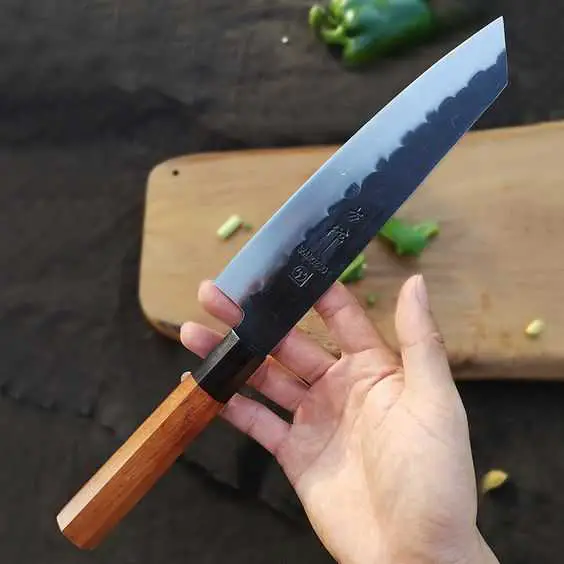
A Good Chef’s Knife is a crucial tool for any home cook or professional chef. The Japanese-style chef's knife, or Gyuto, is a popular option due to its versatility and precision. This knife is thinner and lighter than the French-style chef’s knife, making it perfect for intricate tasks such as filleting fish or slicing meat. With its straight blade, typically ranging from 7 to 9 inches in length and made of high-carbon steel, a good Gyuto knife provides exceptional sharpness and durability.
The handle is typically made of wood, providing a comfortable grip during use. Whether you’re an experienced chef or just starting in the kitchen, investing in a good Chef’s Knife is essential for making meal preparation a breeze.
Upgrade Your Kitchen with a Good Chef’s Santoku Knife
A Good Chef’s Knife is an essential tool for any home cook or professional chef, and a Santoku Knife is a popular and versatile option. With its shorter and wider blade, typically ranging from 5 to 7 inches, a Santoku Knife provides a comfortable grip and exceptional precision. Made of high-carbon steel, this knife offers superior sharpness and durability, making it perfect for slicing, dicing, and chopping various ingredients with ease.
The handle is typically made of materials such as wood or plastic, providing a comfortable grip and optimal balance. Whether you’re preparing a stir-fry or slicing vegetables for a salad, a Good Chef’s Santoku Knife is a must-have tool for any kitchen. Upgrade your culinary skills today with this exceptional knife.
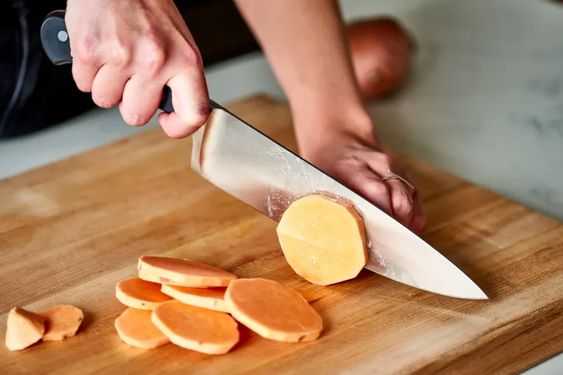
Why Cleaver Knife is the Perfect For Your Kitchen
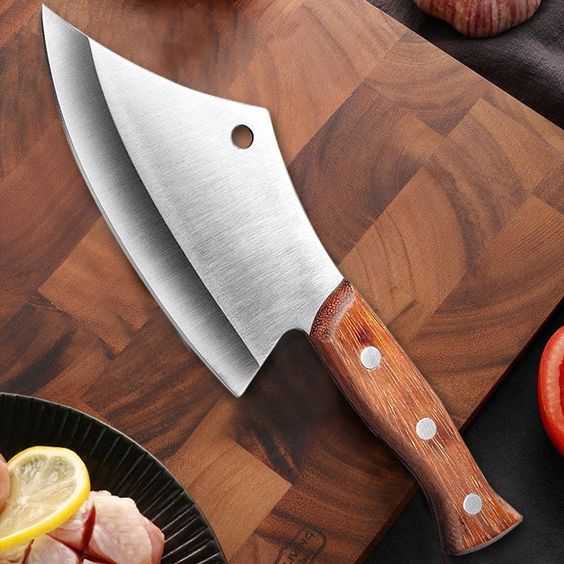
A Cleaver knife is a large, heavy-duty kitchen knife that is primarily used for chopping and cutting through meat and bone. It typically features a thick, rectangular-shaped blade that is between 6 and 12 inches long and is made of heavy-duty steel. The weight of the blade and the angle of the edge allow for a powerful and forceful cut, making it a popular tool in many kitchens.
The handle is usually made of wood or plastic, and is designed to provide a comfortable and secure grip. Although it is often associated with butchering and meat preparation, a Cleaver knife can also be used for chopping vegetables or crushing garlic. Its sturdy design and versatility make it a valuable tool in any kitchen
Paring Knife
The paring knife is a small, lightweight knife that is ideal for precise tasks such as peeling, trimming, and shaping. The blade is typically between 2 and 4 inches long and is made of either stainless steel or high-carbon steel. The handle is usually made of wood or plastic and may feature a full tang or partial tang design.
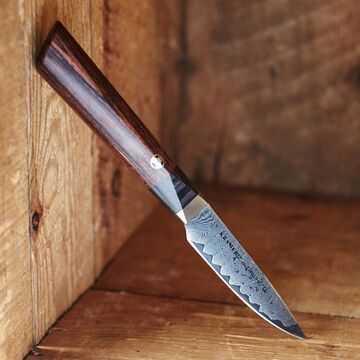
Maintaining Your Chef’s Knife
To keep your chef’s knife in good condition and ensure optimal performance, it’s important to properly maintain it. Here are a few tips for maintaining your chef’s knife:
Cleaning and Storage
After each use, wash your knife with warm soapy water and dry it thoroughly. Avoid soaking the knife for long periods of time as this can cause the blade to rust. Store your knife in a knife block or sheath to protect the blade from damage.
Honing
Honing is the process of realigning the blade’s edge without removing any metal. This can be done using a honing steel or a honing rod. Hold the honing rod vertically and swipe the blade down each side at a 20-degree angle, repeating on the other side.
Sharpening
Sharpening is the process of removing a small amount of metal from the blade to create a new edge. This should be done when the blade is no longer sharp after honing. Sharpening can be done using a sharpening stone or an electric sharpener.
Conclusion
A good chef’s knife is an essential tool for any cook. When choosing a chef’s knife, consider the blade material, blade shape and size, and handle material and design. There are several types of chef’s knives available, including French or Western-style, Japanese or Eastern-style, Santoku, cleaver, and paring knives. Proper maintenance, including cleaning and storage, honing, and sharpening, can help ensure your chef’s knife stays in top condition and performs at its best.
FAQs
What’s the difference between a chef’s knife and a Santoku knife?
While both knives are versatile and used for a variety of cutting tasks, the main difference is in their shape and design. A chef’s knife has a curved blade and a pointed tip, while a Santoku knife has a straighter blade and a flat tip. Additionally, the Santoku knife often has a thinner blade and shorter length than a chef’s knife.
How often should I sharpen my chef’s knife?
It depends on how often you use your knife and what you use it for. As a general rule, a u003ca href=u0022https://prokitchenknife.com/chefs-knife-is-a-game-changer/u0022 data-type=u0022linku0022 data-id=u0022https://prokitchenknife.com/chefs-knife-is-a-game-changer/u0022u003echef’s knifeu003c/au003e should be sharpened every 6-12 months for regular home use. However, if you use your knife frequently or for heavy-duty tasks, you may need to sharpen it more often.
Can I put my chef’s knife in the dishwasher?
It’s generally not recommended to put your chef’s knife in the dishwasher. The high heat and harsh detergents can damage the blade and handle, and the knife can become dull or rusted. Instead, hand-wash your knife with warm, soapy water and dry it immediately after use.
What’s the best handle material for a chef’s knife?
The best handle material for a chef’s knife depends on your personal preference and needs. Wood handles are comfortable to grip and have a classic look, but require more maintenance. Plastic handles are durable


